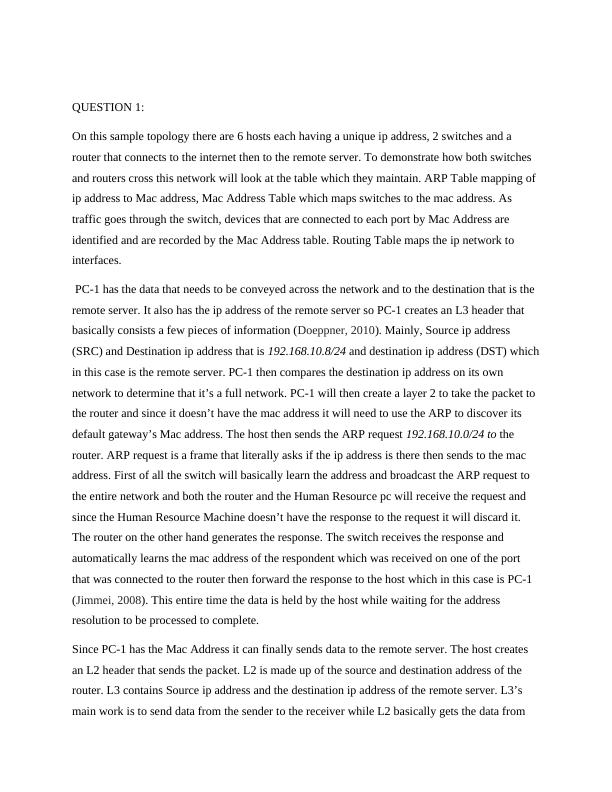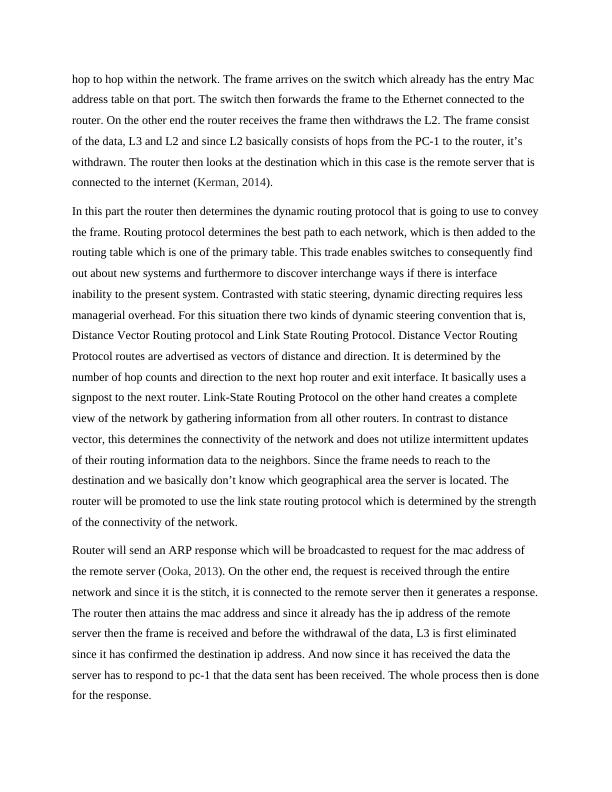Understanding Network Topology and Routing Protocols
Explain how packets are sent and received from a remote server by PC-1 in a network with limited public IP addresses.
9 Pages2234 Words143 Views
Added on 2023-06-07
About This Document
This article explains the basics of network topology, ARP table mapping, and routing protocols. It also covers the stop and wait protocol for data transmission. The content is relevant to SIT202: Computer Networks Trimester 2, 2018.
Understanding Network Topology and Routing Protocols
Explain how packets are sent and received from a remote server by PC-1 in a network with limited public IP addresses.
Added on 2023-06-07
ShareRelated Documents
End of preview
Want to access all the pages? Upload your documents or become a member.
Computer Networks: Routing Protocols, ICMP Packet Encapsulation, and Convergence Properties
|12
|2290
|406
Network Assignment: NAT, ARP, Routing Protocols and TCP
|8
|1411
|461
Network and Communication: Data Flow, IP Routing, Frame Forwarding, and Data Acknowledgment Exchange
|9
|2090
|356
COIT20261 Network Routing and Switching Term 1, 2019
|7
|2019
|65
Assignment based on the Network Management
|8
|1595
|44
Network and Communications Assignment
|15
|3633
|111



